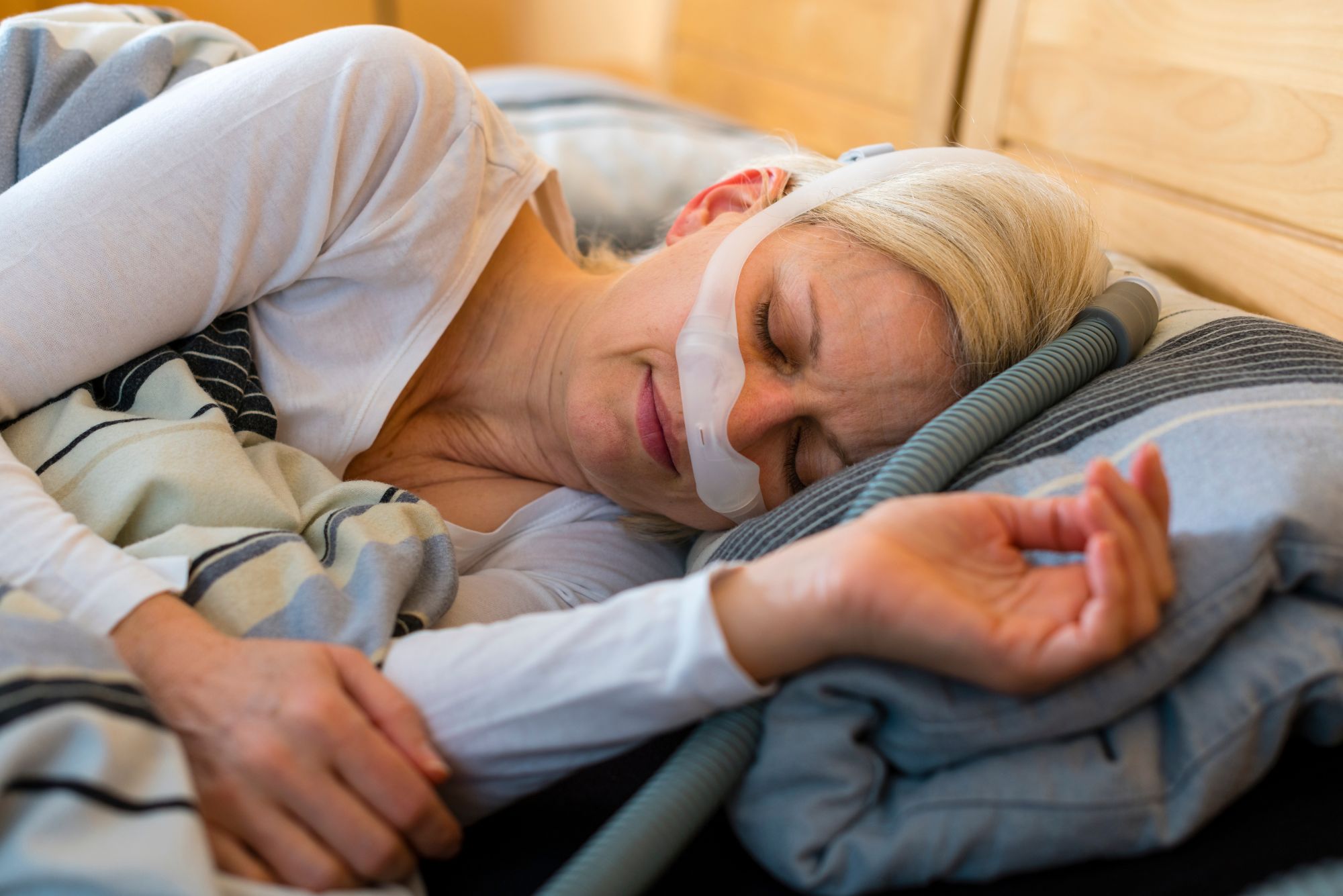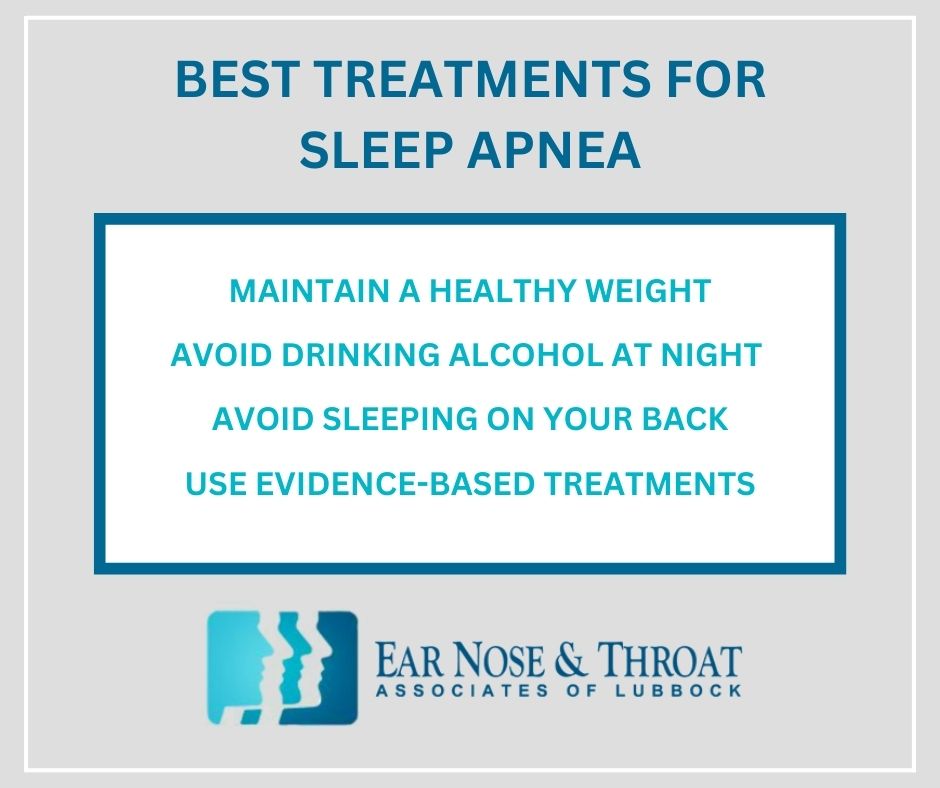The Best Sleeping Position for Sleep Apnea Sufferers

As you age, your likelihood of being diagnosed with sleep apnea increases — people over 65 are twice more likely to need CPAP machines than younger people because of the loss of muscle tone that comes with aging. While this may be frustrating, rest assured that it’s just another part of the natural aging process.
What also may seem out of your control is your sleeping position, which could be leading to sleep apnea’s more harmful side effects. This is a topic we’ve been asked about often over the years — believe it or not, some patients have even sewed tennis balls to the back of their pajamas to keep from sleeping on their back!
The fact is, we only have so much control over our sleeping position, but there are minor things we can do to alter it for our health’s sake. Let’s look at how your sleeping position could be causing side effects like snoring and abnormal breathing and identify the best sleeping position for sleep apnea.
What Is Sleep Apnea?
Sleep apnea is a sleep disorder in which your breathing repeatedly stops and starts throughout the night. The most common type of sleep apnea is called obstructive sleep apnea (OSA), which occurs when the throat muscles relax.
When you sleep, your throat and tongue muscles relax. If you sleep on your back, gravity makes your tongue collapse into your airway, restricting airflow and causing that classic snoring noise we’re all familiar with.
Thankfully, sleep apnea treatments like Inspire are highly effective. This tiny implantable device stimulates the hypoglossal nerve, which controls tongue movement and other airway muscles, keeping your airway open while you sleep.
Other small lifestyle changes, like your sleep position, may also negate some of the adverse side effects of sleep apnea — thus why I’ve heard the question so many times throughout my career.
How Does Sleeping on Your Side Affect Sleep Apnea?
If you suffer from sleep apnea, one of the best ways you can manage it is by sleeping on your side. Whether you sleep on your right or left, your tongue won’t fall back very much, and your airway will remain more open, enabling you to breathe correctly. A recent study found that people with sleep apnea who sleep on their side are less likely to experience disordered breathing at night.
Although there are several different ways you can sleep on your side, the fetal position — sleeping on your left or right side with your legs curled inward toward your body — is the most popular. Research indicates that sleeping in the fetal position may reduce snoring and airway blockage among people with sleep apnea.
How Does Sleeping on Your Stomach Affect Sleep Apnea?
Similarly, when you sleep on your front or belly, your tongue won’t fall back into your throat as much as it would if you were on your back. According to the Better Sleep Council, only about 17% of people sleep on their stomachs, so while it may not be the most desirable sleeping position for most people, it will keep your airway clear at night and help prevent the snoring associated with sleep apnea.
How Does Sleeping on Your Back Affect Sleep Apnea?
Sorry to break it to all you back sleepers, but sleeping on your back is the least favorable position for sleep apnea. If you’re on your back, your tongue can easily fall back into your throat and restrict your airflow. If this is your preferred sleeping position, it may take some time to adjust to a new position, but if you suffer from obstructive sleep apnea, it’s well worth the effort.
What Treatments Are Best for People With Sleep Apnea?

If you have sleep apnea, some great ways to reduce the negative side effects include:
- Maintaining a healthy weight: Excess tissue in the throat can cause further obstruction and breathing issues at night. Achieving and maintaining a healthy weight will reduce the amount of tissue in your throat and may improve your breathing.
- Avoid drinking alcohol at night: Research suggests alcohol consumption is associated with a higher risk of sleep apnea because it disrupts sleep patterns, relaxes muscles excessively, and decreases overall sleep quality. Certain prescription drugs like muscle relaxants, sedatives, and narcotics have the same effects, so try to avoid those as well.
- Avoid sleeping on your back: Experimenting with the best sleeping positions for sleep apnea may reduce its side effects. Do your best to sleep on your side, preferably in the fetal position if that feels comfortable. If you tend to roll onto your back during the night, try placing a pillow between your legs. It may hinder your movements and keep you on your side.
- Use evidence-based treatments: Your doctor may recommend proven treatments for sleep apnea, including a mouthguard, CPAP (continuous positive airway pressure therapy) machine, or, if you can’t tolerate CPAP, Inspire.
See an ENT Doctor for Effective Sleep Apnea Treatment
If you’re struggling with disrupted breathing and snoring caused by sleep apnea, switching to an ideal sleeping position for sleep apnea, like side or stomach sleeping, may help. If not, a trusted ENT doctor can help you identify other solutions.
Dr. Scolaro is a board-certified Otolaryngologist servicing the South Plains area. He has been practicing in Lubbock since 1990 and has earned a reputation as a skilled and experienced surgeon. He currently serves as the Medical Director for Covenant High Plains Surgery Center campuses, is a member of Covenant Health Partners and is an adjunct faculty professor for Texas Tech University Health Sciences Center School of Medicine. Learn more about Dr. Scolaro.
Categories:








